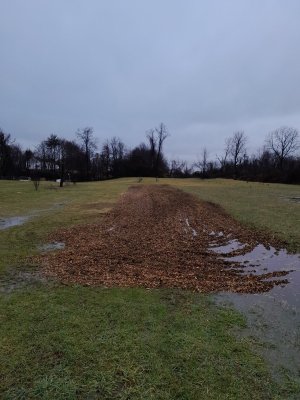bigboreblr
5 year old buck +
Looking to turn the soil in the spring or late summer. I have the lime on hand. Was thinking of liming my foodplot with rye in it this winter. Does ithe lime beat up the rye? I have a 3ft drop spreader, so I will get alot of tire tracks on the plot. Is there a certain time in the winter to apply? Like in the afternoon when the blades of grass have thawed for the day?
I am planning to fertilize as well. Initally I was thinking of liming about 2/3rds a ton per acre this winter. Then apple a 1/4 to 1/3 ton / acre right before turning the soil in. Was going to do about 250 lbs/acre of 6-24-24. Soil is too compacted. Plot was lightly rototilled in 2017 and harrowed with a tractor in 2020. LAst time soil was tested, it was a pH of 6.1.
Likely doing a summer green cover mix or maybe sudan grass, then going to cereal grains, turnips, and fresh clover. Was clovered and oats in spring 2020, then more oats and raddish in the fall. 2021, 2022, and this year was rye in the fall and clovers in the winter.
I am planning to fertilize as well. Initally I was thinking of liming about 2/3rds a ton per acre this winter. Then apple a 1/4 to 1/3 ton / acre right before turning the soil in. Was going to do about 250 lbs/acre of 6-24-24. Soil is too compacted. Plot was lightly rototilled in 2017 and harrowed with a tractor in 2020. LAst time soil was tested, it was a pH of 6.1.
Likely doing a summer green cover mix or maybe sudan grass, then going to cereal grains, turnips, and fresh clover. Was clovered and oats in spring 2020, then more oats and raddish in the fall. 2021, 2022, and this year was rye in the fall and clovers in the winter.
Last edited:

